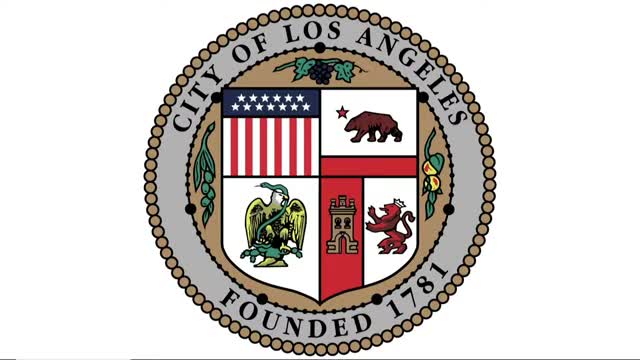Los Angeles explores traffic safety concerns related to automated enforcement technologies
April 09, 2025 | Los Angeles City, Los Angeles County, California
This article was created by AI summarizing key points discussed. AI makes mistakes, so for full details and context, please refer to the video of the full meeting. Please report any errors so we can fix them. Report an error »

Los Angeles City officials are grappling with the implications of automated traffic enforcement technologies, such as speed and red light cameras, following a recent Transportation Committee meeting. The discussions highlighted concerns about the potential economic burden these technologies may place on low-income communities and people of color.
During the meeting, committee members examined the placement of automated enforcement tools, which are intended to enhance traffic safety by targeting areas with high rates of collisions. However, critics argue that these locations often overlap with neighborhoods that have a higher concentration of marginalized populations. This raises questions about fairness and equity in enforcement practices, as the financial penalties associated with these technologies could disproportionately affect those already facing economic challenges.
The committee also reviewed data indicating that despite the issuance of numerous traffic tickets over the years, traffic safety outcomes have not improved. In fact, 2023 marked a troubling milestone for Los Angeles, with over 300 fatal car crashes—more than the number of homicides in the city. This trend calls into question the effectiveness of relying on fines as a deterrent for unsafe driving behavior.
Instead of focusing solely on punitive measures, some committee members advocated for traffic calming strategies that address the root causes of unsafe driving. These approaches aim to modify driving conditions rather than relying on fear of punishment to change behavior.
As the city moves forward with implementing automated enforcement technologies, the Transportation Committee's discussions underscore the need for a balanced approach that prioritizes both safety and equity. The outcomes of these deliberations will be crucial in shaping the future of traffic enforcement in Los Angeles, ensuring that all communities are treated fairly and effectively.
During the meeting, committee members examined the placement of automated enforcement tools, which are intended to enhance traffic safety by targeting areas with high rates of collisions. However, critics argue that these locations often overlap with neighborhoods that have a higher concentration of marginalized populations. This raises questions about fairness and equity in enforcement practices, as the financial penalties associated with these technologies could disproportionately affect those already facing economic challenges.
The committee also reviewed data indicating that despite the issuance of numerous traffic tickets over the years, traffic safety outcomes have not improved. In fact, 2023 marked a troubling milestone for Los Angeles, with over 300 fatal car crashes—more than the number of homicides in the city. This trend calls into question the effectiveness of relying on fines as a deterrent for unsafe driving behavior.
Instead of focusing solely on punitive measures, some committee members advocated for traffic calming strategies that address the root causes of unsafe driving. These approaches aim to modify driving conditions rather than relying on fear of punishment to change behavior.
As the city moves forward with implementing automated enforcement technologies, the Transportation Committee's discussions underscore the need for a balanced approach that prioritizes both safety and equity. The outcomes of these deliberations will be crucial in shaping the future of traffic enforcement in Los Angeles, ensuring that all communities are treated fairly and effectively.
View full meeting
This article is based on a recent meeting—watch the full video and explore the complete transcript for deeper insights into the discussion.
View full meeting
